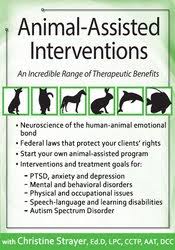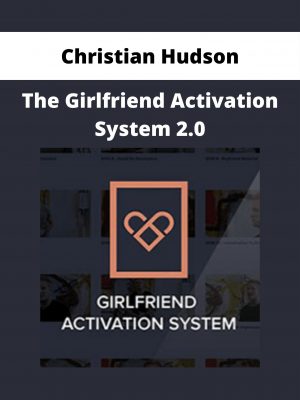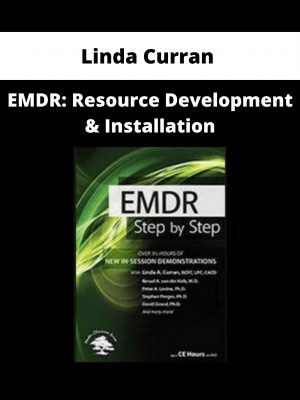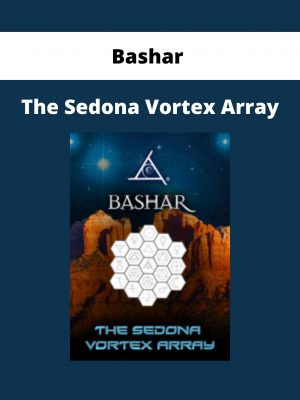Christina Strayer Thornton – Animal-Assisted Interventions
$109 Original price was: $109.$30Current price is: $30.
Shopping Instructions:
- DISCOUNT 15% : SHOP15
- Product Delivery: Within 1 – 12 hours after purchase.
PROOF OF PRODUCT


Are you in need of an effective intervention to help build rapport with your clients who otherwise take many sessions to trust you and feel safe before disclosing? Animals can bridge the trust gap and accelerate the therapeutic alliance.
Christina Strayer Thornton – Animal-Assisted Interventions
Brief Overview
- Human-animal emotional bond
- Therapy animal vs. service animal vs. emotional support animal
- Animal-assisted therapy vs. animal-assisted activities
- Handler vs. therapist
Mindfulness of Animals and How it Helps the Human Brain
- The neuroscience of the human-animal bond
- Why zebras don’t get ulcers
- Animal-assisted interventions without an animal
The Legal Landscape
- Four federal laws that impact animal-assisted interventions
- Client rights and when not to involve an animal
- Informed consent
Evidence-Based Interventions and Treatment Goals/Outcomes:
- PTSD, Trauma, Anxiety and depression
- Tapping technique via petting
- Breathing techniques to relax and calm
- Empower self-efficacy
- Increase socialization
- Increase motivation and goal setting
- Mindfulness exercises with animals
- Attachment Disorders and Conduct Disorder
- Strategies to build trust and strengthen the therapeutic alliance
- Structured play to share emotions/cognitions
- Identifying with therapy animal’s narrative
- Animal commands to develop norms of behaviors
- Interventions that provide emotional support and enhance quality of life
- Autism Spectrum Disorder and ADHD
- Social skills via role play and conversing with the therapy animal
- Animals as mirrors to internal states
- Improve sensory sensitivity through AAT
- Increase confidence in clients
- Animals facilitating relaxation strategies
- Impulse control via body cues/narratives
Pairing AAT with Other Evidence-Based Therapies
- Cognitive Behavioral Therapy (CBT)
- Solution Focused Therapy (SFT)
- Gestalt Therapy
Components of Animal-Assisted Intervention
- Protocol for introducing animal and client
- Interaction techniques for client and animal
- Closure, documentation and secure liability insurance
Become an Animal-Assisted Therapist
- Animal qualifications/characteristics and choosing your therapy animal
- Tools to assess therapy animal’s temperament, limitations and stress levels
- K-9 training and AAT certification programs
- Compassion fatigue: your therapy animal as a support system
- Telemental health: Incorporate your animal in distance video-conferencing
Would you like to receive Christina Strayer Thornton – Animal-Assisted Interventions ?
Description:
- Neuroscience of the human-animal emotional bond
- Pairing AAT with other evidence-based therapies
- Interventions and treatment goals for:
- PTSD, anxiety and depression
- Attachment disorders, trauma and conduct disorder
- Telemental Health and ATT
Are you in need of an effective intervention to help build rapport with your clients who otherwise take many sessions to trust you and feel safe before disclosing? Animals can bridge the trust gap and accelerate the therapeutic alliance.
Join Christina Strayer, Ed.D, LPC, CCTP, AAT, DCC, and learn animal-assisted therapy activities and interventions that produce amazing results for your clients diagnosed with attachment disorders, trauma, anxiety, depression, PTSD, conduct disorder, ADHD and autism. You will receive specific examples of animal-assisted therapeutic goals and strategies to:
- Build social interaction, feelings of safety, security and trust
- Decrease hyperarousal, impulse control and dysregulation
- Empower self-efficacy and quality of life
- Promote motivation and goal setting
- Increase positive communication skills and empathy
This seminar also includes the latest research outcomes, solid foundational knowledge about the human-animal emotional bond and up-to-date information about relevant laws. You will also discover very practical information and resources to help you implement your own animal-assisted interventions.
Related products
NLP & Hypnosis
NLP & Hypnosis
NLP & Hypnosis
iAwake Technologies – Beginner’s Mind (Neuroflow Series) [6 WebRips – WAV User Manual – PDF]
NLP & Hypnosis
NLP & Hypnosis
NLP & Hypnosis
NLP & Hypnosis








![Iawake Technologies – Beginner’s Mind (neuroflow Series) [6 Webrips – Wav User Manual – Pdf]](https://copicourse.com/wp-content/uploads/2021/08/iawake-technologies-beginners-mind-neuroflow-series-6-webrips-wav-user-manual-pdf-300x400.jpg)




